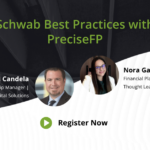Financial advisors operate under the watchful eyes of governing bodies that ensure recommended products are suitable for clients. This oversight underscores the importance of dedicating time and resources to make well-informed, personalized suggestions. As fiduciaries, advisors must provide sound investment advice tailored to their clients’ unique financial goals, circumstances, and lifestyles. Understanding and embracing this responsibility is key to building trust and delivering real value. One effective way to achieve this is by aligning product recommendations with clients’ financial objectives. Let’s explore some daily strategies that can help you strengthen client relationships and ensure long-term success.
Know Your Client
The hallmark of any thriving financial advisory relationship is a hands-on professional who comprehensively understands the client’s posture. Prioritize open and transparent conversations, as these are the key to identifying both short and long-term objectives and any specific and significant milestones that might inform their investing strategy.
Segment Goals — Tailor Messaging Accordingly
Not all financial goals are associated with the same emotional consideration or urgency. Some people may be laser-focused on saving for retirement, while others may have short-term goals such as purchasing a home or providing for their child’s education. Either way, you need to make sure the client receives the right message at the right time so they feel you’re invested in their financial well-being.
Assess Risk Appetite
Accurately evaluating your client’s risk tolerance is one of the many ways you can help to determine the most appropriate investment products. Some clients may be risk-averse and prefer conservative options with stable returns, while others feel comfortable and even confident with a portfolio that contains aggressive, more volatile investments with higher potential returns. When you balance risk and return, you can better meet or exceed expectations.
Offer Diverse Solutions
No two clients are identical. The same goes for their investment portfolios. It’s best to offer a range of product recommendations that cater to different risk profiles and investment timelines. This could include a mix of stocks, bonds, mutual funds, ETFs, and alternative investments, ensuring diversification while keeping their goals in mind.
Be Tax Savvy
Investment accounts vary in terms of their tax requirements. A new product may seem like it aligns with the client’s goals but it could complicate tax matters. This is why it’s important to brush up on tax implications before making a recommendation, so you can provide complete and transparent information to clients. No one likes surprises from the IRS, after all.
Monitor and Adjust
Financial goals are not written in pen; they evolve over time with changes in personal circumstances, market conditions, and economic highs and lows. Make a point to regularly review and reassess your client’s goals and investment portfolio to ensure optimization. Be proactive in fine-tuning as needed to keep their financial strategy in alignment.
Educate and Empower
Putting financial literacy front and center can empower investors to make more informed decisions in the financial marketplace. Take the time to explain why you acted in such a way, the inherent risks, and what they stand to gain from the move. This co-pilot approach can inspire the client to actively participate in the decision-making process. The result can be a sense of ownership in shaping their financial future.
Play the Long Game
Building trust and rapport is what separates a fledgling financial advisory from one with great potential. When your actions communicate that you value their financial well-being and deliver value through personalized recommendations, you plant the seed for cultivating long-lasting relationships built on mutual respect, trust, and understanding.
Ready to elevate your client service and make more informed decisions? PreciseFP offers powerful features to help you assess risk tolerance and track changes over time, ensuring you have the data you need to make well-informed recommendations. With percentage-based calculations, you can quickly verify if you’ve gathered all necessary information. Leverage technology to provide a higher level of service and build stronger client relationships.










